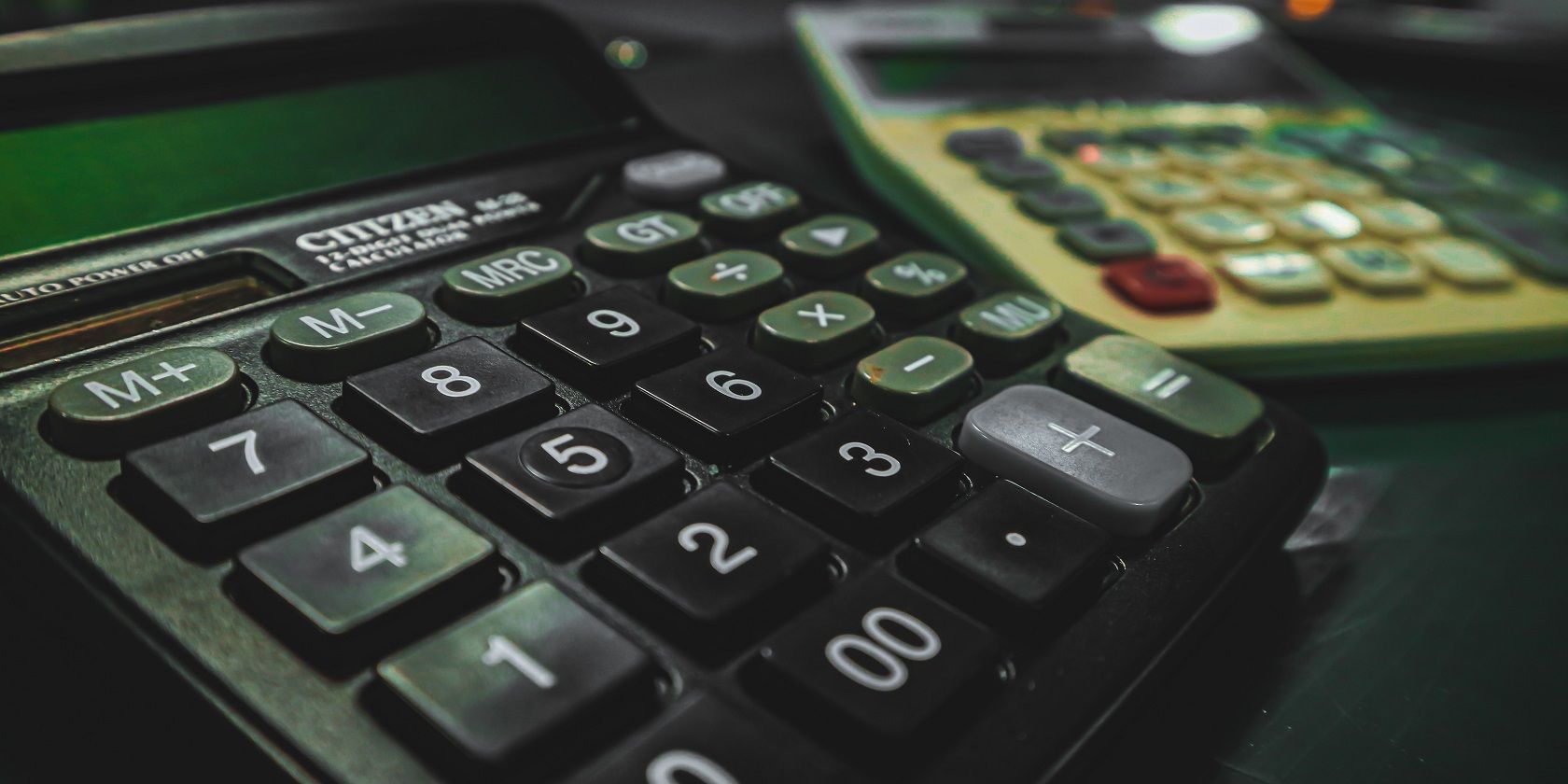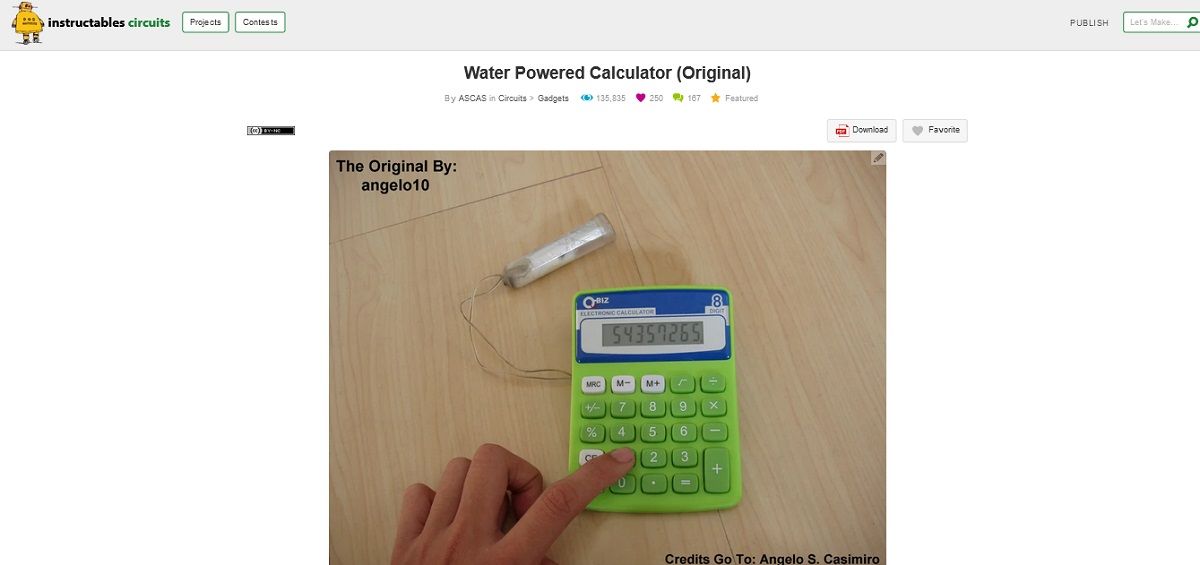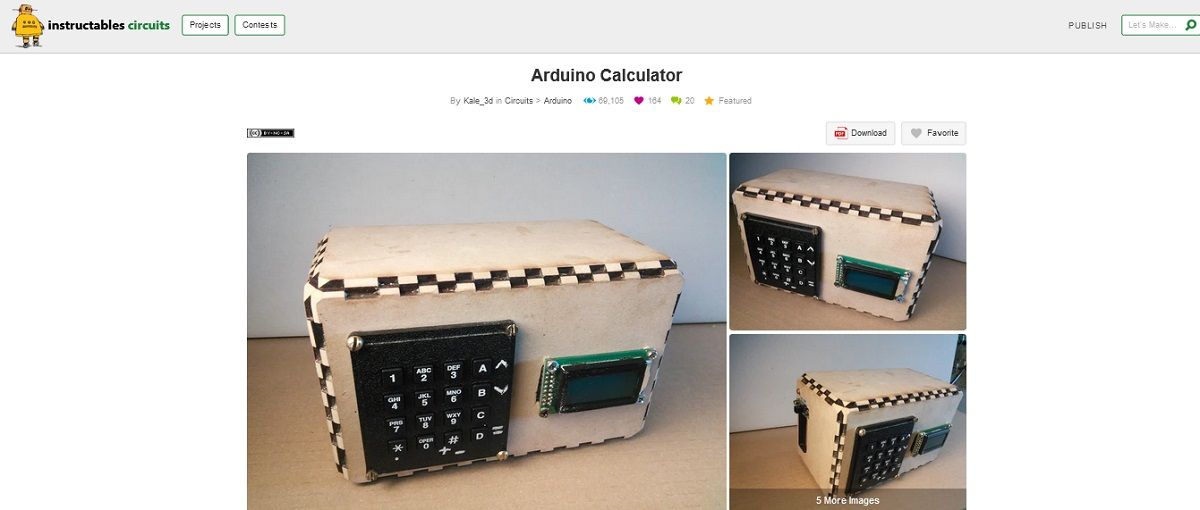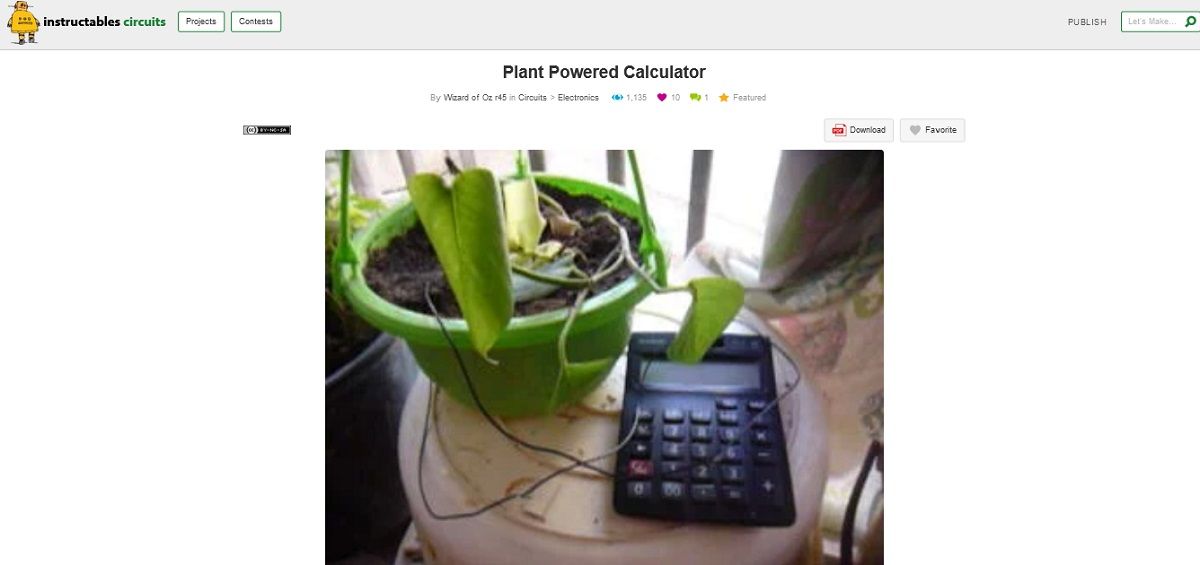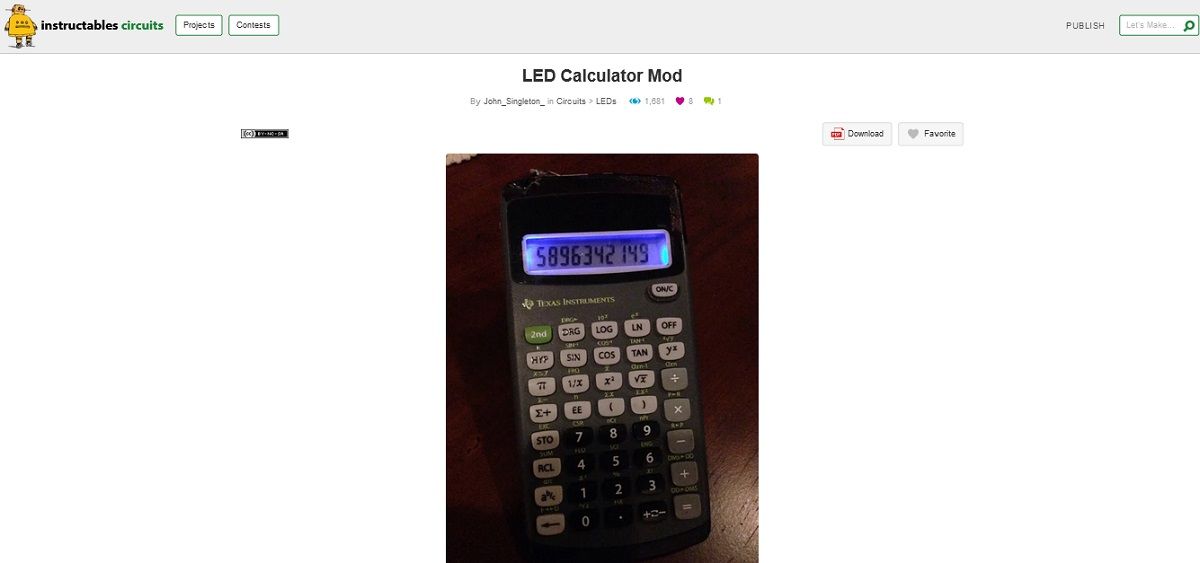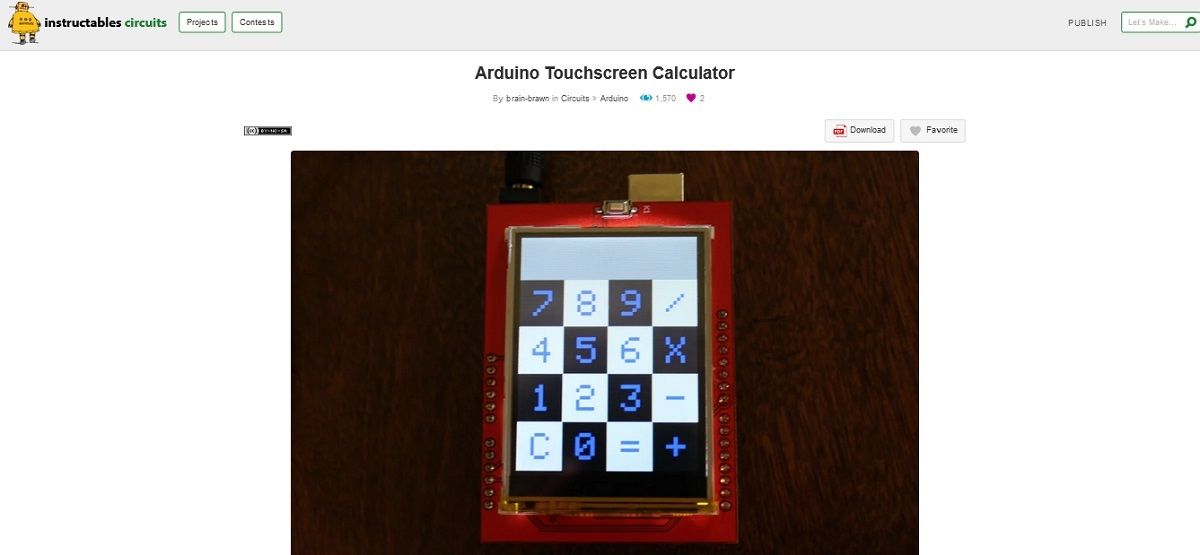While every smartphone has a calculator, the old-fashioned electronic calculator is going nowhere. It's still widely used in schools and, like most gadgets in this era, has evolved to include some more powerful computing features.
However, unlike back in the day, the bench calculator is now easier to access, and you can even build one at home. Open to giving it a shot? Check out these eight creative ways to upgrade or build a calculator.
1. Water-Powered Calculator
Water is an excellent energy source, and this creative, water-powered calculator completed on Instructables lets you put that theory into action. It has positive and negative electrodes from a carbon rod and aluminum foil that trigger a chemical reaction in the presence of water, generating enough electricity to run an old-school calculator.
With just a few drops of your tap water, it produces enough power to keep a calculator working for two to three months. When the numbers start fading out, simply refill it again. It's a cool way (literally) to upgrade an old-school calculator, and it's eco-friendly.
2. Arduino Calculator
Have a lot of downtime coming up and you have no idea what to do? Build an Arduino-based calculator. It's a bit huge compared to the old-fashioned desk calculator and lacks some keys, but it's a fun, fulfilling way to spend your free time.
Moreover, it makes for a good challenge as you can always take it upon yourself to customize it to a practical size and incorporate the missing keys. The code and all the supplies you'll need are well-elaborated in this Instructables guide. Here are more great Arduino projects for beginners.
3. IR Calculator
Want to build a unique calculator? Turn that old speaker's IR remote into one. Besides the remote, you will also need an LCD screen, Arduino Uno, a couple of resistors, and this code on Instructables.
Once complete, you simply need to point your IR remote to the LCD screen and calculate away. It's not just creative but also an excellent way to use items you'd otherwise have to trash while simultaneously making up for those you don't have—a keypad.
4. Plant-Powered Calculator
They say nature has everything we need, and that includes clean, renewable energy, which you can turn into electric voltage. And in case you thought you read it wrong, yes, plants can generate electricity.
In fact, they can produce enough renewable energy to power a calculator, as proven in this Instructable. So, if you are looking to build an incredibly creative and unique calculator that'll have everyone talking, this is one of the projects you should certainly attempt.
5. LED Calculator Mod
Remember how we used to put stickers on calculators back in the days? It was a pretty good way to spice up the standard calculator, but you know what's even cooler? A basic calculator with an LED-illuminated screen. So, add some LEDs if you'd like to take things a notch higher.
It'll transform your basic calculator from standard to creative and unique real quick, making it a perfect gift for your niece or nephew who's still in school, and is incredibly into calculus.
And the best part? You don't need to be an expert tinkerer to pull this project off; you only require small wires, a pair of LEDs, a screwdriver, and tape. The steps are detailed in this easy-to-follow Instructable. In addition to this project, here are more awesome robotics projects students can try at school.
6. Arduino Touchscreen Calculator
If you dislike using your smartphone's calculator because you end up distracted every time, but at the same time, hate having to press the physical buttons on your old-school calculator every time, this touchscreen calculator is just what you need. It'll solve both your problems—helps keep your smartphone away until the end of your work day and sports a large screen to simulate a smartphone's calculator user experience.
It works just as well as a standard model; it can perform addition, subtraction, multiplication, and division calculations, including decimal-based ones. And it's relatively easy to build. You will need an LCD shield, Arduino Uno, USB A to B cable, and all other supplies listed in this Instructable.
7. Raspberry Pi Pico-Based Pocket Calculator
Working with numbers while on the move? Or are you always in the field, and your job involves a lot of calculations? You would need a pocket calculator if you answered yes to either or both questions. While you can always buy one, building one is a better option because it will be cheaper and more fulfilling to use a gadget you created from scratch every day.
Plus, you don't need to be a genius to build one because everything you need, including the code and a step-by-step guide, is readily available in this Instructables guide for a Raspberry Pi Pico-based pocket calculator. And if you don't have a single-board computer yet, feel free to read this guide to see which is the best Raspberry Pi model for your next project.
8. Cardboard Calculator
Back in the days when there were no electronic calculators, and smartphones were far on the horizon of innovation, people would use a device known as the abacus for calculations. While it was effective, it took a lot of manual work to perform even the simplest calculations. If they had the creativity to build this easy-to-make cardboard calculator, calculations would have been very simple.
But those days are gone, and now you have a shot at making one. It's a fun project you can try out with the kids, plus it's effortless to build. Once complete, you can perform three-digit additions on it, but you may customize it to perform any other functions you find suitable and to include as many figures as you see fit.
You will need some thin cardboard such as the one your breakfast cereal comes in, thick cardboard, checkered paper, glue, and all supplies listed in this Instructables guide. To successfully hack similar woodworking DIY projects in the future, you need to check out the best DIY channels to master woodworking, 3D printing, and maker projects.
Upgrade Your Calculator With These DIY Projects
Electronic calculators may not be as popular as they once were, but they still have an integral place in society. And if you happen to handle a lot of calculations in a day, building or upgrading one is an excellent way to reduce your smartphone usage while at work. Plus, it's always better to use an electronic calculator over a smartphone because, with the former, there are no distractions.
From a water-powered version, a pocket-sized option, to a cardboard calculator, we've filled the above list with a variety of options, so you can try one that best fits your situation. So, whether you want a fun project to try with the kids, a pocket-sized one to bring along on your field trips, or an eco-friendly one, there's an option you'd find interesting for your next project.

